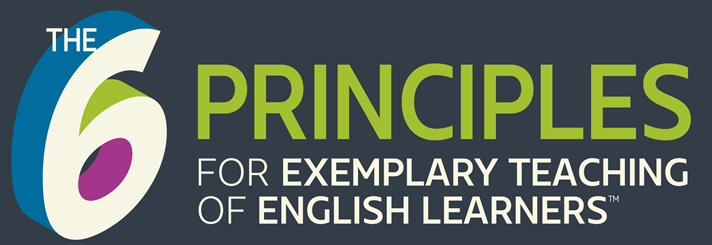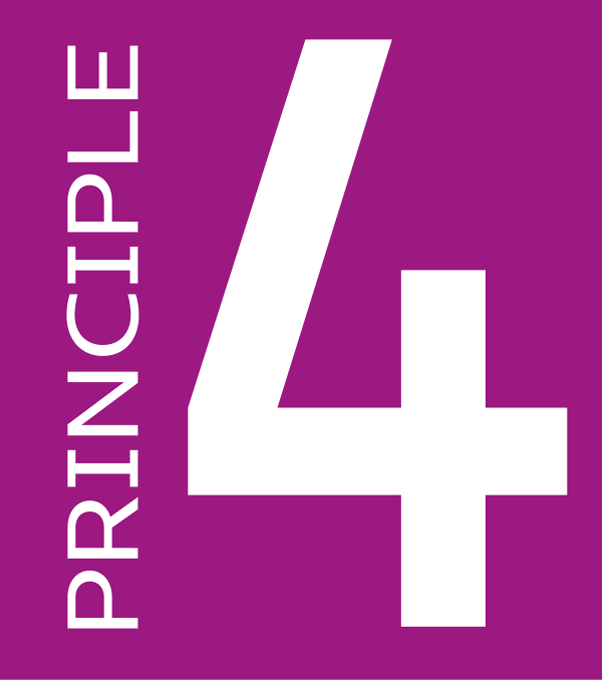ADAPT LESSON DELIVERY AS NEEDED
Teachers continually assess as they teach—observing and reflecting on learners’ responses to determine whether the students are reaching the learning objectives. If students struggle or are not challenged enough, teachers consider the possible reasons and adjust their lessons.
Some Practices for Principle 4
Teachers check student comprehension frequently and adjust instruction according to learner responses.
To teach effectively, teachers need to evaluate what students know and what they do not know, in real time. We do not want to wait until the end of a lesson or the end of a unit to discover that our students have misunderstood a key concept or have incorrectly learned critical vocabulary.
Classroom Example: Teachers check comprehension with group response techniques.
Teachers can use quick comprehension checks during a lesson to gauge how the class is doing. Some group response activities include
- Thumbs Up/Thumbs Down
- Response Boards (all students respond individually on a dry-erase board or sheet of paper and show the teacher)
- 3-2-1 for Self-Assessment, and
- Technology options (websites and apps) using handheld devices or tablets.
The following idea from Assessing English Learners in U.S. Schools offers other ways that teachers can determine student knowledge before they adapt instruction.
We want to know, for example, which science vocabulary words Tom should put on a review handout next week for the ELLs for whom he provides language support. To supplement a science-specific vocabulary review, he could provide some instruction on “academic” linking words such as furthermore, however, and therefore. Tom could gather the information he needs to make this decision in a few ways. For example, he could do the following:
- informally but systematically check students’ knowledge of the words through questioning or conversation
- follow up if students look confused or use a word incorrectly
- administer a short quiz to students
- look for evidence of students’ understanding of these words in their recent class work
Depending on the time available, Tom’s familiarity with the students’ recent progress, and the type of work they are doing, any of these approaches could be useful. (Farnsworth & Malone, 2014, p. 4)
Teachers adjust their talk, the task, or the materials according to learner responses.
If teachers notice student confusion or misunderstanding during a lesson, they make adjustments so that all learners can meet the learning goals. They may vary their oral language input, use home language or alternative texts, present visual aids, or arrange peer support. They might adapt a task by adding more time, finding supplemental resources, or pulling a small group of students together for reteaching.
Classroom Example: Teachers adapt the task to learner proficiency levels.
Teachers may
- regroup students to provide support with English-speaking or bilingual peers
- offer a home language summary to be read before reading a text in English
- reformat study guides and notes handouts so students can illustrate a concept or define it in the home language
- adjust the product of a learning task so students can exhibit their knowledge through projects, group tasks, demonstrations, and other means
- provide alternatives to paper-and-pencil or computer assessments, such as portfolios and reports.
Classroom Activities that Support Principle 4
Teachers often find young learners need support as they learn to summarize. The following activity from the popular New Ways Series offers a creative process that can be differentiated.
The following activities may be useful if you notice your students need some targeted support with their writing skills. Try these activities from the New Ways Series and the TESOL Resource Center (TRC).
Story Cut Up Full
Common Errors In Grammar And Collocations
Four Ways to Integrate Co-Locations
Establish a Culture of Shared Responsibility
When evaluating special educators or teachers working in gifted and talented programs, give feedback about how well they are adapting their curriculum and instruction for identified English learners of diverse cultural backgrounds and varied proficiency levels.
Reading Specialists and Instructional CoachesIf you are an instructional coach, revisit the methods and materials that all teachers use to determine whether any changes are needed to respond well to new populations’ language and literacy levels.
District Curriculum DirectorsPeriodically revisit existing curricula to ensure their responsiveness to current English learners, particularly if backgrounds or learning needs change. For example, if students arrive speaking languages new to the district, find materials in these home languages for the curricular units mandated by the district and make them available to students.

